WORLD CLASS COACHING
Tactical Series Pep Guardiola
By Luca Bertolini
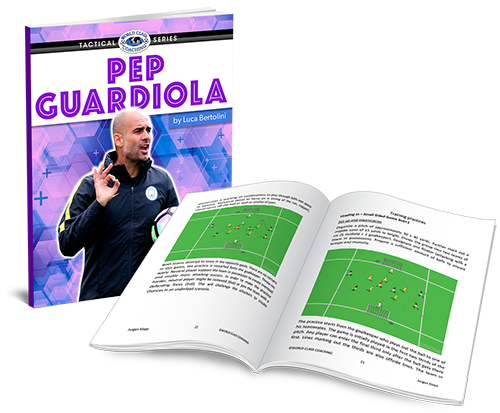
Table of Contents
PART FOUR
Defending Phase
Transition to Attack and Counter Attacks
Defensive Phase
These are some Guardiola statements about the defense phase organization:
"It is important that the tackle belongs in your team as a skill, but the tackle is the last choice; I don’t train tackles. I train to keep the ball and defend as well as possible.”
“The second ball is a concept. It's typical here in England, when they use a lot of tackles. I am not a coach for the tackles. I don't train tackles.”
“What I want is to try to play well and score goals. What are tackles?
You have to win the duels, that is true. But normally when you play good, you win a lot of tackles.”
"You concede counter attacks when you lose easy passes, simple passes, when the players want to do more creative things that are not necessary, and you are not organized when you lose the ball.”
"We have been playing more simple. Our game is quicker because we play simple, not just because, of course, we are fast in front, but especially because we are simple. We play one or two touches. One or two touches: no more than that. We are organized through the ball. We travel, we play with the ball together and when this happens, it is different.”
Here are some percentage data of this phase:
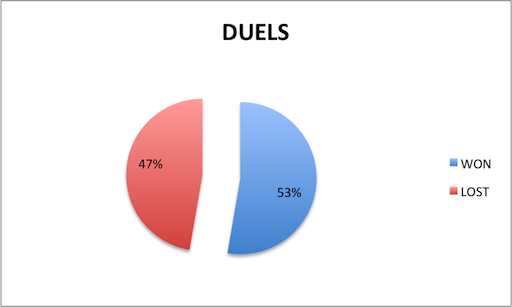
The duels percentage is the proof how Manchester City is not a "fighting team,” but it's also a proof of what Guardiola says and how it's carried out on the field; it's a team which is organized through the ball and the ball is the first and most important key element of the structure.
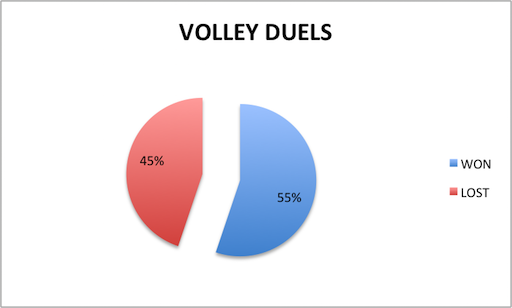
As the main opposition tactic against Man City, as transition to attack, is to play long ball behind the defense line, since the first season, Guardiola's team improved the ability to defend the volley and long balls. During the second and winning season (2017/2018), the players have been able to limit the opposition counter attacks, which was the most difficult issue of the first season.
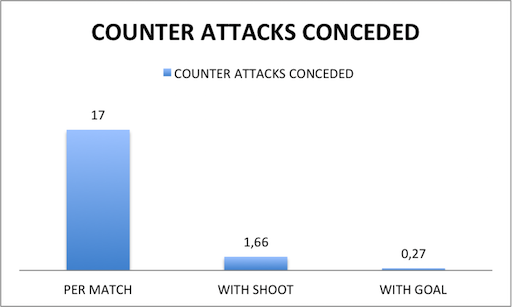
The tackles percentage is very explicative of their main objective: they are used to recover the possession and not just to block the opposition possession phase.
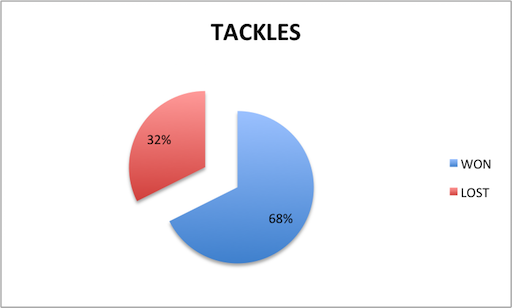
All the main defense principles of play are explained in the following pages.
1) Defense numerical and positional advantage in the center of the field
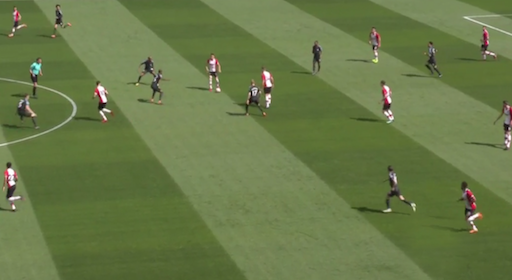
A 3 v 2 duel is played on the ball with Delph as inverted fullback, the balance midfielder Fernandinho, and the nearest advanced midfielder De Bruyne. The wingers Sanè and Sterling are dropping back to cover the spaces on the flanks and one of the center backs is placed very high to prevent the opposition center forward from playing toward the penalty area.
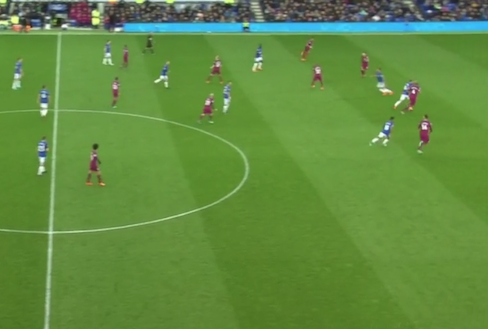
In this situation of open ball against Everton, a significant numerical advantage is very clear; a 6 v 3 + 1 duel is played in the area where the ball is arriving and a 4 v 3 along the defense line, where two players are attacking the ball and two are defending the depth at the same time.
2) Create a center defense line of three at the back, while being in possession inside the opposition half, to be sure of the defensive numerical advantage
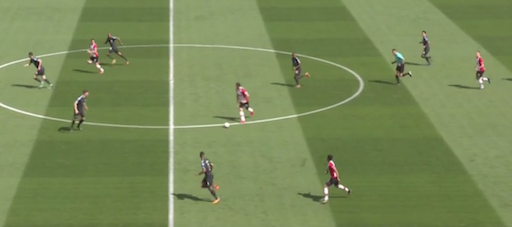
In this situation, the move starts with a 3 v 1 duel at the back; one defender attacks the opposition ball carrier to close the spaces and prevent him from dribble forward. The other 2 in the center are able to close the deep spaces, being in numerical advantage 2 v 1. A general 5 v 3 situation is easily recognizable.
3) Force the direction of play of the opposition toward the sidelines or backward.
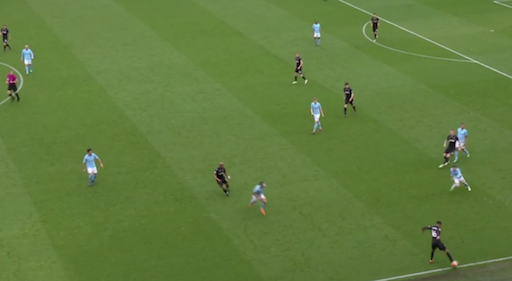
The center spaces are already close while the opponent is receiving the ball along the sideline.
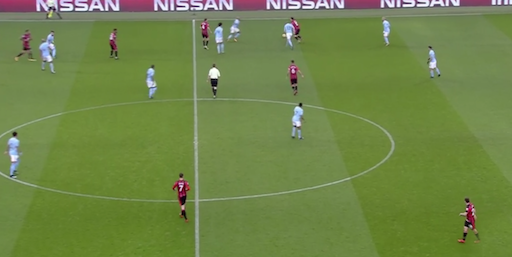
De Bruyne is on the ball, forcing the opposition ball carrier toward the sideline and then double marking with the left fullback. Sanè is marking the nearest potential receiver. A 3 v 2 duel is played on the ball and the orientation of the opposition pressure is clearly forced out wide. A general 9 v 5 duel is played around the ball area.
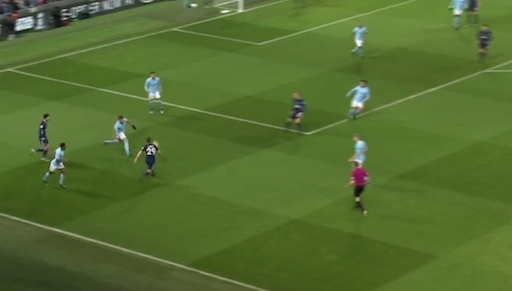
A 5 v 3 situation is being played along the defending right flank of Manchester City; a cross is allowed in the end, but as the opposition has been forced to bring more players inside this space to keep the possession, the finishing phase becomes difficult inside the penalty area, where there are few players.
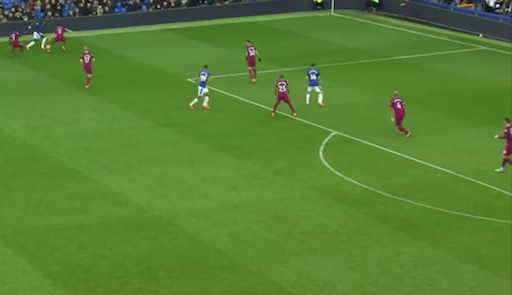
A 2 (+1) v 1 duel is played against the opposition ball carrier as well as a 3 (+1) v 2 duel just inside the penalty area. The opposition winger is closed and his danger is very poor.
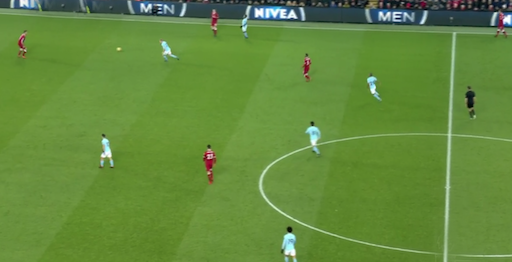
In this move, the opposition build up phase of play has been forced wide first and then backward; it's now very important to put intense pressure against the center defenders to prevent them from finding an easy forward center passing lane toward the midfielders. Long balls are preferred, as there should be a line of three players at the back who can cover them.
4) Protection of deep spaces from long balls
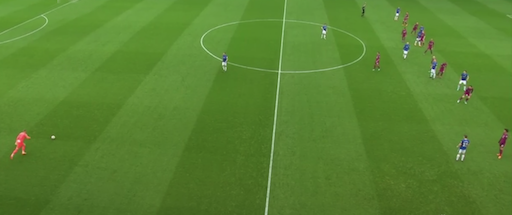
Cover the center space in front of the penalty area with a unique line against opposition free kicks.
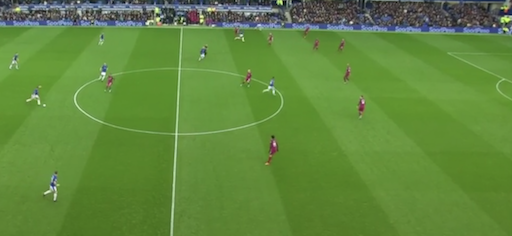
In this move, the line of three defenders (2 center backs and the balance midfielder) is helped by the fullbacks to create a strong side in the area, where the opposition long ball is sent. One center back covers the depth; the second one and the center balance midfielder can attack the ball. The fullbacks overload the area.
Transitions to attack and counter attacks
Counter attacks, as "positive transitions" are the main and most interesting evolution of Pep Guardiola philosophy.
Barcelona’s transitions to attack were carried out managing the possession to shape the team before attacking the opposition goal. When the ball was recovered on the flanks, after the orientation of the opposition possession toward the sidelines, Barcelona used to attack along the same flank if in numerical advantage, or the field was split if outnumbered.
When the ball was recovered in the center space, the attacking phase was carried out thanks to the diagonal runs without the ball of the wide players, finishing through the spaces in front of the goal; if any space was available, free wide teammates became important options to keep the possession.
During the seasons as Bayern Munich manager, when his team started to play with fast wingers, the counter attacks phase was improved and developed thanks to players like Ribery, Robben and Müller.
Manchester City is both a possession team as well as a counter attacking team, when it is possible to recover the ball and to break to the other end without giving the other team a chance to regroup. Man City can counter attack directly and to play out quickly with fast pattern of play; in these situations, the rhythm is higher than ever.
Pep Guardiola’s team was able to reach the 70% of possession in some matches this season, but Man City did many damages to the opposition with counter attacks very often a part of all their passes during the build-up phase of play. Quick one and two-touch passing combinations was often carried out to open spaces for Sergio Aguero, Kevin De Bruyne, Sanè and Walker to play forward or to finish.
28 goals were scored through counter attacks, the 19% of all attempts (14 attempts each match), with an average per match of 0,45 (3%); 1 goal every two matches.
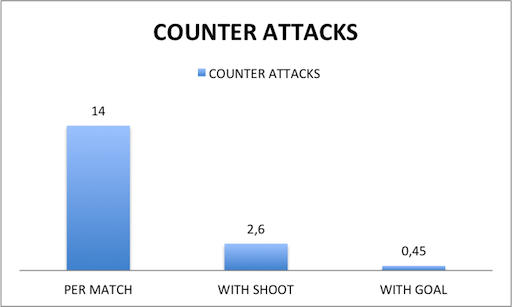
This first counter attacking sequence shows a counter-trend with the pattern of play during Barcelona seasons. The opposition possession phase was directed toward the flank first, but then the ball was recovered in an outnumbered situation. As Man City plays in a more direct way than Barcelona and Bayern Munich, a counter attack attempt is carried out anyway.
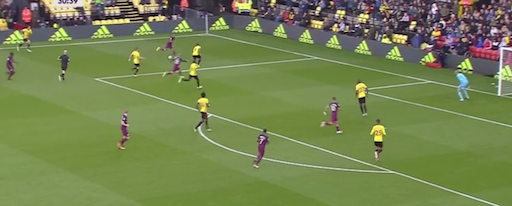
As an important principle of play is to overload the center during the defense phases of play, then the center spaces can be overloaded even while counter attacking. Two players, the center forward Aguero and the opposite winger Sterling are attacking the opposition goal, the second advanced midfielder De Bruyne could be able to attack a potential second time of the ball or a rebound of the goalkeeper.
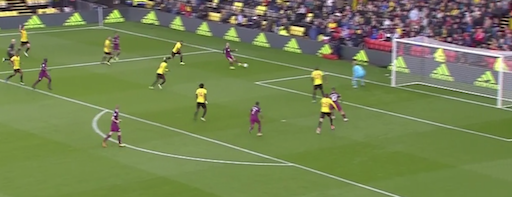
This sequence is again very explicative because it reflects the data of the finishing zones inside the opposition penalty area
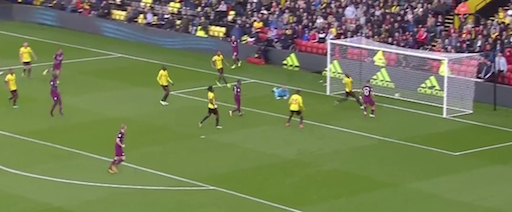
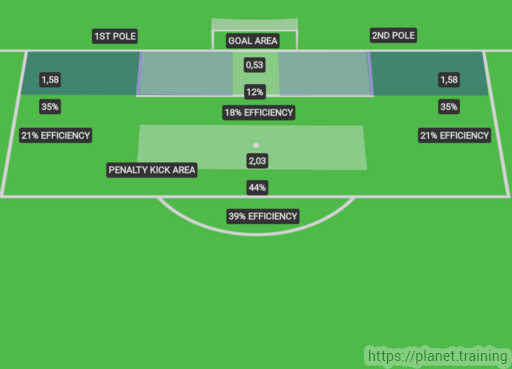
Here again, a remarkable 2 v 5 outnumbered situation for Aguero and Sanè against the opposition defenders is very clear. We may find quality advantage but not even a positional advantage, as all the defenders could cover the spaces and put pressure on the forwards.
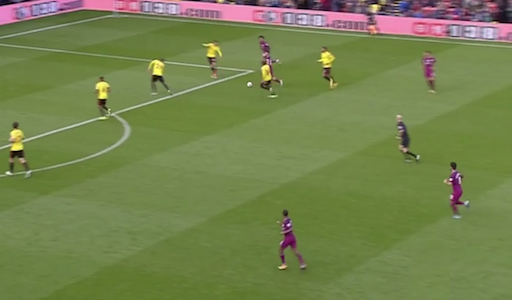
Finishing phase is searched dribbling the ball near the opposition goal even if outnumbered.
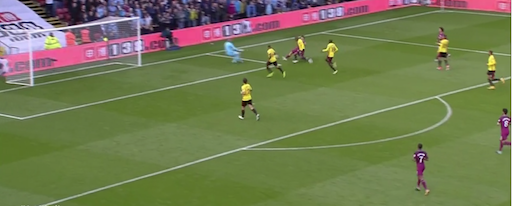
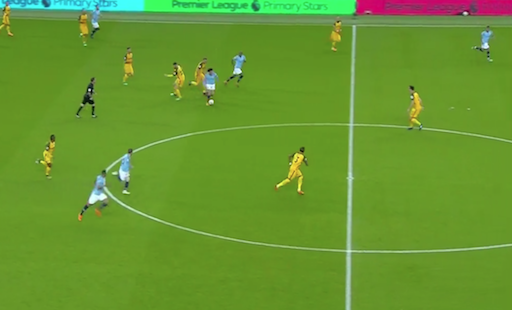
In this third example, Sanè recovers the possession after the counter pressing move and exploits the center space in front of him.
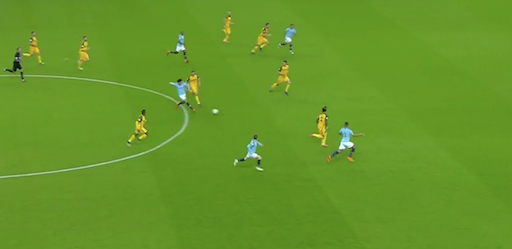
A 5 v 5 situation is then played overloading of the center space and with the chance to play behind the opposition defense line, toward the winger, who can attack directly the opposition goal. Sterling can dribble freely till the opposition goal in the end.
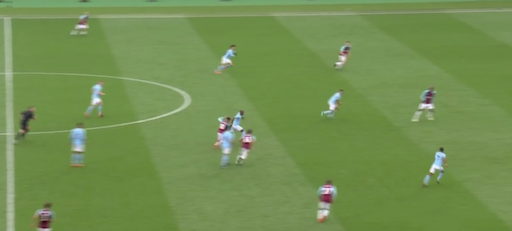
This last example is like the previous one as development; the ball is recovered in middle third, the balance midfielder Fernandinho closes the opponent at the back, who loses the possession. All the three forwards attack the depth.
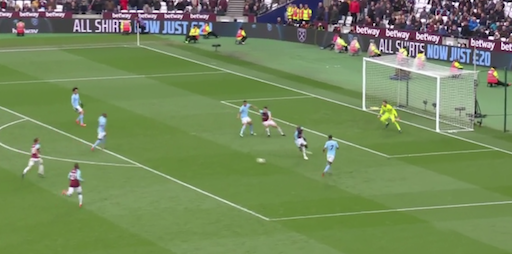
A quick pattern of play through the winger, who ran inside, is then played to finish, supporting the move from the back.


